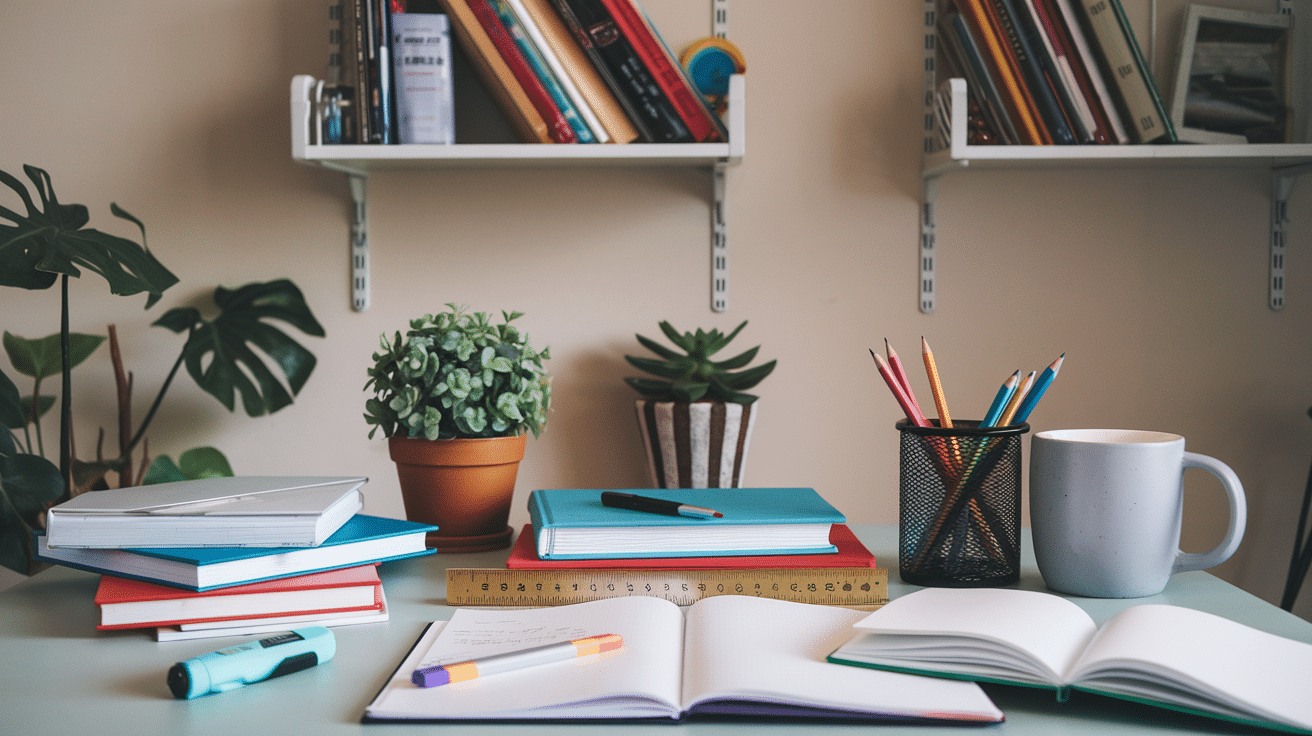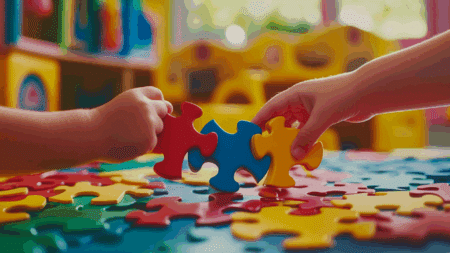Learning happens everywhere. Are you tired of hearing “I’m bored” from your kids? Finding ways to keep them engaged in meaningful learning at home can feel overwhelming.
Between work, chores, and everything else, who has time to plan educational things that don’t involve screens?
I’ve got good news! Your home is already filled with learning opportunities. From cooking breakfast to folding laundry, everyday moments can transform into powerful learning experiences without extra prep or fancy materials.
In this guide, I’ll share 111 simple yet effective ways to spark curiosity and build skills using what you already have.
These activities fit into your normal routine and work for kids of different ages. They’re quick, practical, and actually fun.
How to Choose the Right Educational Activities
Finding educational things that truly benefit children can be challenging. With countless options available, from apps to workbooks to hands-on projects, how do you know which ones will actually support learning and development?
Consider Developmental Stage
- Match the child’s current abilities: Choose activities slightly above their current skill level to provide a healthy challenge without frustration.
- Look for age-appropriate options: Activities should align with developmental milestones for the child’s age group.
Align With Learning Styles
- Visual learners: Offer activities with charts, pictures, and visual demonstrations.
- Auditory learners: Include activities involving music, discussion, and verbal instruction.
- Kinesthetic learners: Provide hands-on experiments, building projects, and movement-based learning.
Focus on Engagement
- Follow interests: Activities connected to a child’s passions will naturally hold their attention longer.
- Encourage active participation: Look for options that require thinking and doing, not just watching.
Balance Structure and Freedom
- Structured activities: Provide clear guidelines and objectives for focused learning.
- Open-ended activities: Allow for creativity, problem-solving, and multiple solutions.
Consider Practical Factors
- Time requirements: Be realistic about how long activities take to set up and complete.
- Space needed: Choose activities suitable for your available environment.
- Materials required: Select options with reasonable supply needs and costs.
The best educational things balance learning objectives with enjoyment. When children find learning fun, they’re more likely to stay engaged and retain information.
Start with activities that match current interests, then gradually expand to introduce new concepts and challenges.
Educational Things to Do at Home (That Don’t Feel Like “School”)

Unlock fun, hands-on educational things to do at home that spark curiosity and creativity—without feeling like boring homework.
From science experiments to kitchen adventures, learning has never been this exciting!
Ignite Curiosity with STEM and Science Fun
Create a baking soda and vinegar volcano to see a chemical reaction in action.
Build a simple bridge from popsicle sticks to learn basic engineering concepts.
Use magnets to explore which materials are magnetic and which are not.
Grow a crystal from salt or sugar to observe the process of crystallization.
Design a paper airplane and test how wing shape affects flight distance.
Try the egg drop challenge by building a device to protect an egg from a fall.
Make a DIY lava lamp using oil, water, and tablets to study density and reactions.
Set up a pulley system with string and a bucket to understand simple machines.
Use a ruler and flashlight to measure how light creates shadows and angles.
Build a tower from marshmallows and spaghetti to explore structure and stability.
Track the temperature outdoors daily to study weather patterns.
Use food coloring and celery to see how plants absorb water through capillary action.
Create static electricity with a balloon to see how electrons cause attraction.
Make your own compass using a magnetized needle to understand Earth’s magnetic field.
Use LEGOs or blocks to model simple machines like levers or gears.
Creative Chaos: Arts, Music & Imagination Unleashed
Paint to music and let kids express emotions through color and rhythm.
Make puppets from socks or paper bags to encourage storytelling and creativity.
Draw with your eyes closed to boost your imagination and let go of perfection.
Use recycled materials to build sculptures and learn about sustainability.
Create a family comic strip to practice storytelling with drawings and dialogue.
Learn simple drumming patterns to develop rhythm and listening skills.
Build a shoebox theater and put on a play to practice speaking and sequencing.
Make a mood collage using magazine cutouts to explore feelings through art.
Create a sound map by drawing the noises you hear around you.
Try finger painting without brushes to focus on texture and sensory play.
Make your own musical instruments to understand how sound is created.
Design your own board game with rules and characters to boost creative thinking.
Use sidewalk chalk to turn your driveway into a giant art canvas.
Invent a character and write a short play to combine writing, acting, and design.
Learn a simple dance routine to connect movement with rhythm and memory.
Backyard Brilliance: Outdoor Adventures That Teach
Start a small garden to learn how plants grow and what they need to survive.
Go on a nature scavenger hunt to boost observation skills and pattern recognition.
Collect and sort leaves to study different tree types and leaf shapes.
Use a magnifying glass to explore insects and tiny details in nature.
Build a bird feeder and watch how different species behave and eat.
Track the sun’s movement by marking shadows at different times of day.
Measure rainfall with a homemade rain gauge to understand weather and data collection.
Catch and release insects to observe animal behavior and body structures.
Set up a backyard obstacle course to develop motor skills and coordination.
Identify clouds and learn how they relate to upcoming weather.
Create a wind chime and observe how wind speed affects sound.
Build a mini compost bin to understand decomposition and recycling in nature.
Use sidewalk chalk to teach math, spelling, or drawing in a large format.
Set up a bug hotel with sticks and leaves to study where insects like to live.
Map your backyard to learn basic geography and spatial awareness.
Lie on the grass and identify constellations or star patterns at night.
Track animal footprints in the mud to practice observation and deduction.
Play “nature bingo” by matching real objects to pictures for classification practice.
Learn Life Skills in the Kitchen
Make a nature journal to record what you see, hear, and feel outside each day.
Observe ants or bees at work to learn how insects live and cooperate in nature.
Use sticks and rocks to build miniature shelters and explore basic construction.
Create leaf rubbings to study the texture and structure of different plants.
Watch the moon each night and track its changing shapes and phases.
Test how different surfaces feel with bare feet to explore sensory learning outdoors.
Try water play with buckets and sponges to learn about absorption and movement.
Make a simple sundial to tell time using the sun and shadow positions.
Collect and compare soil samples to discover how texture and color vary by area.
Set up a simple weather station to observe wind direction, temperature, and rain.
Make your own compass rose and practice using cardinal directions outside.
Create a color wheel from natural items to learn about color theory through nature.
Clever Screen Time: Digital Tools That Teach
Use the Khan Academy app to learn subjects like math, science, and history at your own pace.
Explore Google Earth to virtually travel the world and learn about geography.
Watch educational videos on YouTube Kids to discover topics like space, animals, and science facts.
Play the Prodigy Math Game to practice math skills through fun battles and quests.
Use Scratch to create your own animations and learn basic coding concepts.
Try Duolingo to build your vocabulary and practice grammar in a new language.
Visit National Geographic Kids to explore articles, games, and videos about nature and science.
Play interactive story games that boost reading comprehension and decision-making.
Use Tynker to learn to code through games, puzzles, and creative projects.
Explore virtual museum tours to see famous art and artifacts from home.
Use BrainPOP to watch short animated lessons and take quizzes on different subjects.
Try GoNoodle to get active with movement-based learning and fun dances.
Download a typing game to improve your keyboard skills in a playful way.
Play logic puzzles and brain training apps to sharpen problem-solving skills.
Use educational podcasts to listen and learn while relaxing or on the go.
Try Starfall for learning phonics, reading, and early math through games and songs.
Use Epic! to read thousands of digital books suited to your child’s reading level.
Join Minecraft Education Edition to learn coding, science, and design in a 3D world.
Use NASA’s Kids Club to explore space through games and educational content.
Try ClassDojo to build character skills and classroom-style routines at home.
Explore PBS Kids online to play games based on science, social studies, and reading.
Use ABCmouse to follow a learning path for preschool through early elementary.
Explore Wonderopolis to spark curiosity by answering “wonder” questions every day.
Try Seesaw to create digital portfolios and share learning through videos and drawings.
Use Google Arts & Culture to explore art, history, and culture from museums around the world.
Little Global Citizens: Language & Culture for Curious Kids
Use Duolingo Kids to learn new languages through games, stories, and repetition.
Watch cartoons in another language to improve listening skills and vocabulary naturally.
Label household items with translated words to practice reading and language recognition.
Sing songs in different languages to learn pronunciation and cultural rhythm.
Make a mini travel journal to explore countries, flags, and fun facts.
Try traditional crafts from around the world to connect with different cultures through hands-on art.
Cook international recipes together to learn about food, ingredients, and traditions from other countries.
Listen to music from different countries to experience global sounds and instruments.
Learn basic greetings in five languages to build communication skills and cultural awareness.
Watch kid-friendly documentaries about other cultures to see real-life customs and environments.
Create your own passport and stamp it when “visiting” new countries through books or videos.
Play language memory games to match words with images and reinforce learning.
Explore cultural festivals and holidays to understand the values and traditions of different communities.
Read bilingual storybooks to experience storytelling in two languages.
Connect with a virtual pen pal to practice writing and learn about daily life in another country.
Game On: Learn While You Laugh
Play Boggle to practice quick word formation and improve vocabulary.
Use LEGO bricks to build models that teach counting, symmetry, and design.
Try a “Roll and Read” dice game to blend reading fluency with fun movement.
Create a spelling relay race to combine active play with word practice.
Play “What’s Missing?” with objects to boost memory and attention to detail.
Use a color sorting game to teach early learners about classification and patterns.
Try “Opposite Match” to help kids understand antonyms through quick pairing.
Play “Build a Sentence” with word cards to learn sentence structure and grammar.
Use hopscotch with numbers or letters to reinforce recognition while staying active.
Set up a puzzle race to enhance problem-solving and fine motor skills.
Try “Rhyme Time,” where players find rhyming pairs to boost phonemic awareness and creativity.
Printable Resources and Tools to Support Learning
Printable resources are a simple yet powerful way to bring structure, fun, and motivation into any learning routine.
If you’re a parent teaching at home, a teacher in the classroom, or a caregiver supporting after-school learning, these tools can make the process smoother and more effective.
1. Free Activity Checklists
Help kids stay focused and feel accomplished as they complete each task. These printable checklists break down daily or weekly tasks into small, achievable steps.
You can customize them by subject (math, reading, science), time of day, or even type of activity (indoor, outdoor, creative). Kids love checking off completed items, and it helps them learn planning and time management.
2. Weekly Learning Schedule Templates
Bring calm and clarity to your week with a simple visual plan. These templates allow you to map out what your child will be learning each day, from lessons and projects to snack breaks and free time.
Having a weekly overview posted on the fridge or wall gives kids a sense of routine and helps reduce “what do we do now?” moments.
3. Reward Charts and Educational Trackers
Motivate kids by celebrating progress in a fun, visual way. Reward charts are perfect for building positive habits and tracking goals—whether it’s completing homework, reading daily, or being kind to a sibling. You can use stickers, stars, or drawings as markers of success.
Educational trackers can also monitor specific achievements, like number of books read, math problems solved, or science experiments completed.
The Bottom Line
Learning at home happens in small moments throughout our day. The 111 ideas I’ve shared can convert ordinary activities into meaningful learning experiences. These simple tools and techniques work because they fit into family life naturally.
Why does this matter? Kids who learn through daily activities build knowledge that sticks. They see educational things as part of real life, not just something that happens at school.
What’s next? Start with just one or two ideas from this list today. Notice how your child responds and adapt as needed. You don’t need fancy materials or complex plans—just your attention and these basic strategies.
Have you tried any of these educational things and methods at home? Share your experiences in the comments section below!




